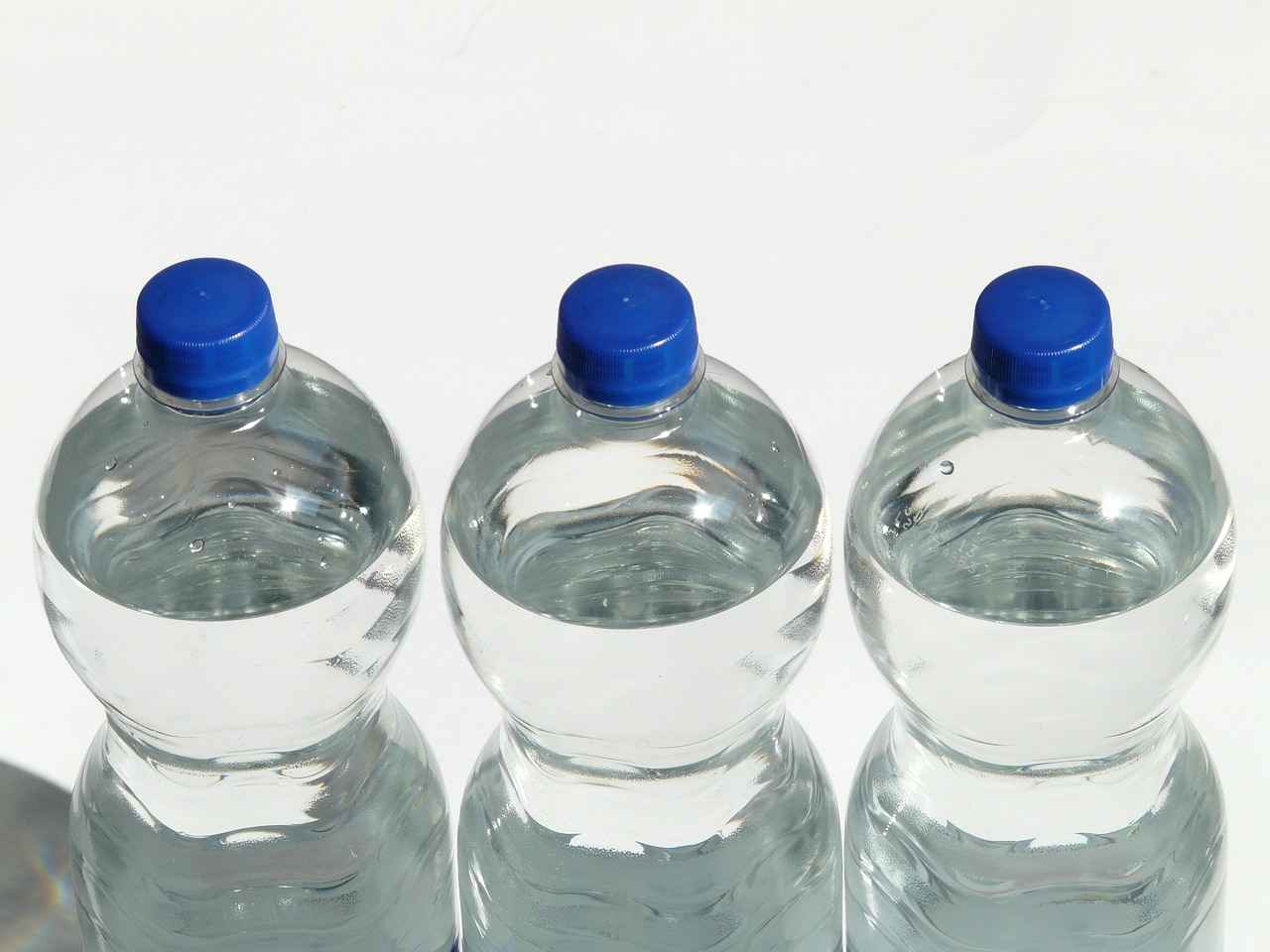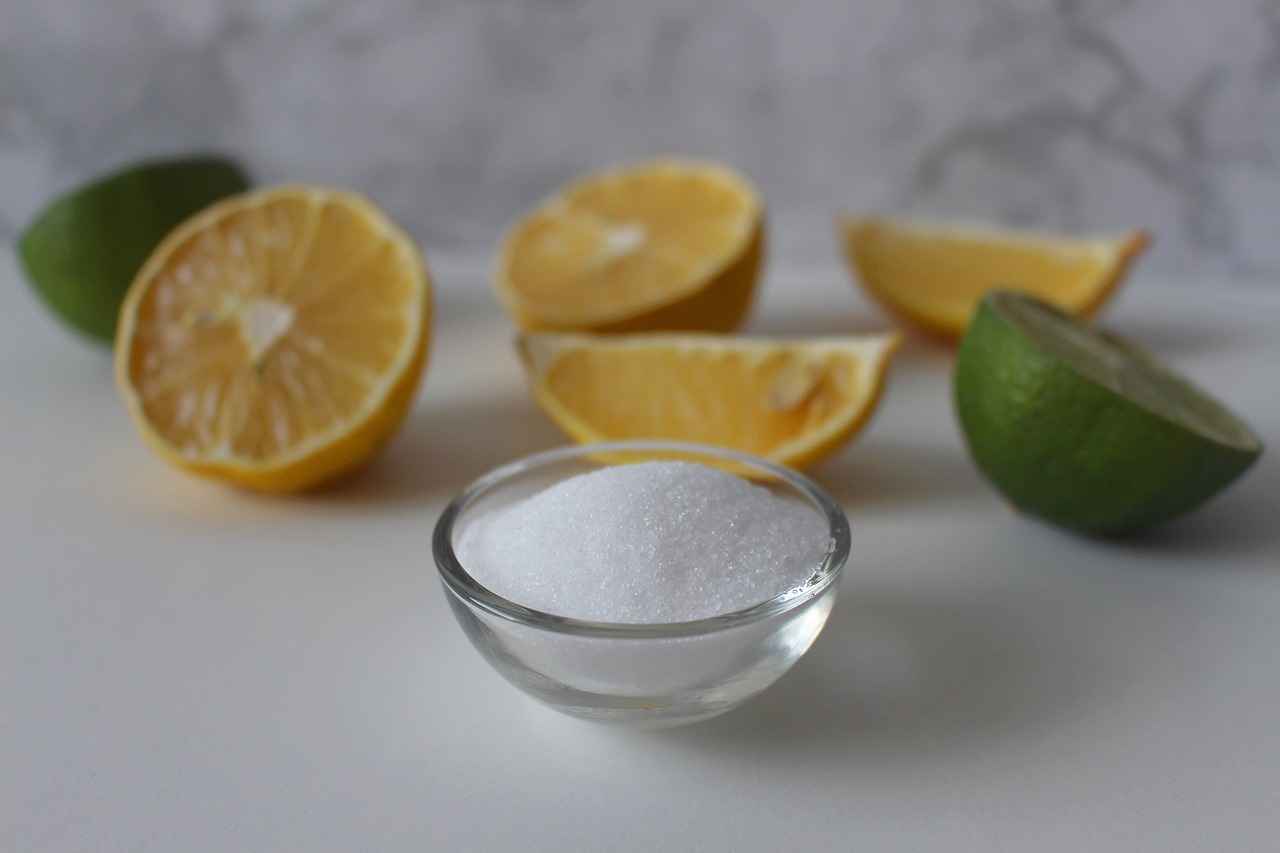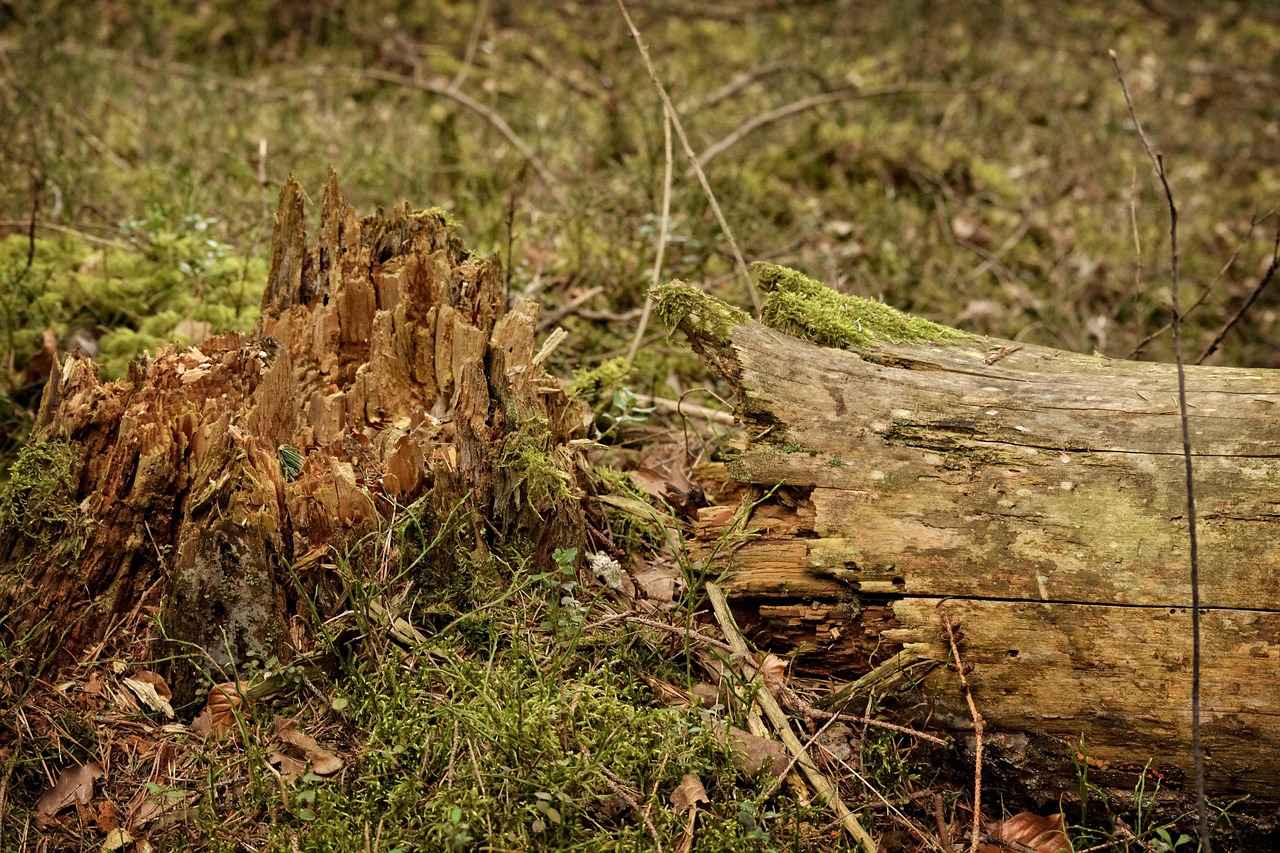This article provides a comprehensive guide on using muriatic acid to effectively lower the pH in your swimming pool, including dosage, safety tips, and best practices.
Muriatic acid, or hydrochloric acid, is a powerful chemical commonly used in pool maintenance. It plays a vital role in balancing pool water chemistry, particularly in lowering high pH levels. Maintaining the right pH is essential, as it prevents corrosion of pool equipment and ensures the effectiveness of sanitizers.
Regular testing of pH levels is crucial for maintaining pool health. There are various methods to test your pool’s pH, ensuring you know when to add muriatic acid.
Test strips are a quick and convenient way to assess pH levels. Simply dip the strip into the pool water and compare the resulting color to the chart provided. This method is ideal for quick checks but may not be as precise.
A liquid test kit offers a more accurate measurement of pH levels. To use it, follow these steps:
- Fill the test vial with pool water.
- Add the indicated reagents.
- Compare the resulting color to the pH scale.
Calculating the correct amount of muriatic acid to add is vital for effective pH adjustment. The dosage depends on your pool’s size and current pH levels.
A general guideline is to add 1 quart of muriatic acid per 10,000 gallons of water to lower the pH by approximately 0.5. Always refer to the manufacturer’s instructions for specific recommendations.
For larger pools, you will need to adjust the dosage accordingly. Use the formula:
Dosage (quarts) (Desired pH decrease) x (Pool volume in gallons) / 20,000
Safety is paramount when handling muriatic acid. Follow these essential precautions:
Always wear protective gear such as gloves, goggles, and a mask to safeguard against splashes and fumes.
Store muriatic acid in a cool, dry place, away from direct sunlight and incompatible substances. Always handle it with care to prevent accidents.
The method of adding muriatic acid can impact its effectiveness. Follow this step-by-step process:
Before adding muriatic acid, it is crucial to dilute it in a bucket of water. Always add acid to water, never the other way around, to prevent violent reactions.
Pour the diluted acid slowly into the deep end of the pool while the pump is running. This ensures even distribution and effective pH lowering.
Knowing when to retest your pool’s pH levels after adding muriatic acid is crucial for maintaining balanced water chemistry.
It is recommended to wait at least 4 to 6 hours after adding muriatic acid before retesting the pH level.
After adding muriatic acid, the pH will gradually stabilize. Monitor the levels regularly to maintain optimal water conditions.

What is Muriatic Acid and Why Use It for Pools?
Maintaining a swimming pool requires attention to various chemical levels, with pH balance being one of the most critical factors. Muriatic acid, a diluted form of hydrochloric acid, plays a significant role in achieving and maintaining this balance. Understanding its use is essential for any pool owner who wants to ensure a safe and enjoyable swimming environment.
Muriatic acid is a potent chemical compound commonly used in pool maintenance to lower pH levels and reduce alkalinity. Its effectiveness in dissolving minerals and organic matter makes it a valuable tool for pool care. However, proper usage is vital to avoid potential damage to pool surfaces and equipment.
The primary reason for using muriatic acid in pool maintenance is to achieve balanced water chemistry. When the pH level of pool water is too high, it can lead to several problems:
- Cloudy Water: High pH levels can cause the water to appear cloudy, making it less appealing for swimming.
- Scale Buildup: Excessive alkalinity can lead to scale formation on pool surfaces and equipment, which can be costly to remove.
- Reduced Sanitizer Efficiency: Chlorine and other sanitizers work best within a specific pH range. If the pH is too high, these chemicals become less effective, leading to potential health risks.
When added to pool water, muriatic acid dissociates into hydrogen and chloride ions. This reaction effectively lowers the pH level, allowing for better chemical balance. Regular use, when necessary, helps maintain optimal conditions, ensuring that the pool remains safe for swimmers.
While muriatic acid is beneficial, it must be handled with care. Here are some best practices:
- Always Wear Protective Gear: When handling muriatic acid, use gloves, goggles, and a mask to prevent skin and eye irritation.
- Dilute Before Use: It’s advisable to dilute muriatic acid with water before adding it to the pool. This reduces the risk of damage and ensures even distribution.
- Add Acid in the Evening: Adding muriatic acid during the evening when the sun is down helps prevent rapid evaporation and allows for better absorption.
In summary, understanding the role of muriatic acid in pool maintenance is crucial for achieving balanced water chemistry and preventing damage to pool equipment and surfaces. By following best practices and using this chemical responsibly, pool owners can enjoy a clean, safe, and inviting swimming environment.

How to Test pH Levels in Your Pool?
Maintaining the right pH levels in your swimming pool is crucial for ensuring a safe and enjoyable swimming experience. A balanced pH level not only protects swimmers from irritation but also preserves the integrity of your pool equipment and surfaces. This section discusses the effective methods for testing your pool’s pH levels and knowing when to add muriatic acid for adjustments.
Regular testing of pH levels is essential for maintaining pool health. The ideal pH range for swimming pools is typically between 7.2 and 7.8. If the pH level falls below this range, the water can become acidic, leading to potential damage to pool surfaces and equipment. Conversely, a high pH level can cause scaling and reduce the effectiveness of chlorine. Therefore, consistent monitoring is key.
- Using Test Strips: Test strips are a convenient and quick way to assess your pool’s pH. Simply dip a strip into the water for a few seconds, then compare the color change to the chart provided. This method is great for routine checks.
- Using a Liquid Test Kit: For more accurate results, a liquid test kit is recommended. This method typically involves adding a few drops of reagents to a sample of pool water and observing the color change. Follow the manufacturer’s instructions for precise measurements.
Timing your pH tests can significantly impact your pool maintenance routine. It’s advisable to test your pool’s pH levels:
- At least once a week during the swimming season.
- After heavy rainfall or significant weather changes.
- After adding chemicals, such as chlorine or muriatic acid.
In addition to regular testing, be vigilant for signs indicating that pH levels may be off balance:
- Cloudy Water: This can indicate a high pH level, which may reduce chlorine effectiveness.
- Skin and Eye Irritation: Low pH can cause discomfort for swimmers.
- Scaling: High pH levels may lead to calcium buildup on pool surfaces.
Once you have tested your pool’s pH levels, you can decide whether to add muriatic acid. If your pH readings are above 7.8, it’s time to take action. Always refer to the dosage guidelines based on your pool size and current pH level to ensure safe and effective adjustments.
By regularly testing your pool’s pH levels and understanding the signs of imbalance, you can maintain a healthy swimming environment that is both safe and enjoyable for everyone.
Using Test Strips
When it comes to maintaining the health of your swimming pool, regular pH testing is essential. One of the most popular methods for quickly assessing pH levels in your pool is through the use of test strips. These simple yet effective tools can provide you with immediate feedback on the acidity or alkalinity of your pool water. In this section, we will explore how to use test strips effectively and interpret the results accurately.
Test strips are small, plastic strips with reactive pads that change color based on the pH level of the water they come into contact with. To use them, simply dip the strip into your pool water for a few seconds, then remove it and wait for the indicated time, usually around 15 seconds. The pads will change color, reflecting the current pH level of your pool water.
- Step 1: Ensure the test strip is fresh and not expired. Using old strips can lead to inaccurate readings.
- Step 2: Dip the strip into the pool water, making sure to fully submerge the reactive pads.
- Step 3: Remove the strip and shake off any excess water to prevent dilution.
- Step 4: Wait for the specified time before comparing the color of the pads to the color chart provided with the strips.
Once you have the color results from your test strip, it’s time to interpret them. The color chart will usually indicate a range of pH levels from acidic (below 7.0) to alkaline (above 7.8). The ideal pH level for swimming pools is typically between 7.2 and 7.6. If your results fall outside this range, you may need to adjust the pH accordingly.
- Not following the instructions: Always read the manufacturer’s instructions for the specific test strips you are using.
- Contaminating the strip: Avoid touching the reactive pads with your fingers, as oils and dirt can affect the results.
- Reading results too late: Timing is crucial; waiting too long can lead to inaccurate readings.
Test strips offer several advantages for pool maintenance:
- Speed: They provide quick results, allowing you to make timely adjustments to your pool chemistry.
- Ease of use: No special training is required; anyone can use them.
- Portability: Test strips are compact and easy to carry, making them ideal for on-the-go testing.
By utilizing test strips correctly, you can ensure that your pool water remains balanced and safe for swimming. Regular testing not only helps in maintaining the right pH levels but also contributes to the longevity of your pool equipment and overall water quality.
Using a Liquid Test Kit
When it comes to maintaining your swimming pool, ensuring the correct pH balance is crucial for both safety and comfort. One effective method for testing pH levels is by using a liquid test kit. This method offers more accurate readings compared to other testing methods, such as test strips, making it a preferred choice for pool owners who want precise control over their water chemistry.
A liquid test kit is designed to provide highly accurate measurements of your pool’s pH levels. The liquid reagents react with the water sample, allowing for a clear color change that indicates the pH level. This method minimizes the risk of human error, which can occur with test strips, where lighting and color perception might affect the results.
Using a liquid test kit involves several straightforward steps:
- Gather Your Supplies: Ensure you have your liquid test kit, a clean container for the water sample, and a stirring stick.
- Collect a Water Sample: Use the container to collect water from about 12 inches below the surface, away from skimmers and returns for the most accurate result.
- Add Reagents: Follow the instructions provided with your kit. Typically, you’ll add a specific number of drops of the pH reagent to your water sample.
- Mix the Solution: Gently stir the water sample to ensure the reagent is fully mixed.
- Compare Colors: After allowing the sample to react for the time specified in the kit instructions, compare the resulting color to the pH chart provided. This will give you the current pH level of your pool water.
Understanding the results is vital. The ideal pH range for pool water is between 7.2 and 7.8. If your reading falls below this range, it indicates acidic water, which can lead to discomfort and corrosion of pool surfaces. Conversely, a reading above 7.8 suggests alkaline water, which can cause scale buildup and cloudy water.
If your test indicates that the pH is outside the ideal range, you may need to take corrective action:
- For Low pH: Add muriatic acid or sodium bisulfate to lower the pH.
- For High pH: Use sodium carbonate (soda ash) to raise the pH level.
Always follow the manufacturer’s guidelines for the correct dosages based on your pool size and the degree of adjustment needed.
Regular testing is essential for maintaining optimal water chemistry. It is recommended to test your pool’s pH levels at least once a week, or more frequently during heavy usage or after significant rainstorms. This proactive approach can help prevent issues before they arise.
In conclusion, using a liquid test kit is an effective way to ensure your pool’s pH balance is maintained. By following the outlined steps, you can achieve precise measurements, allowing you to take the necessary actions to keep your pool water safe and enjoyable for all users.

How Much Muriatic Acid Should You Use?
When it comes to maintaining the perfect swimming pool environment, understanding how much muriatic acid to use is essential. Muriatic acid, a diluted form of hydrochloric acid, is widely used to lower pH levels in pool water. This guide aims to provide you with the necessary guidelines to calculate the correct amount of muriatic acid based on your pool size and existing pH levels.
Using the right amount of muriatic acid is crucial for effective pH adjustment. An incorrect dosage can lead to water that is either too acidic or still too alkaline, which can cause damage to pool surfaces, equipment, and even affect swimmers’ comfort. Thus, understanding the proper dosage is vital for maintaining a safe and enjoyable swimming environment.
As a general rule, adding 1 quart of muriatic acid to a 10,000-gallon pool can lower the pH by approximately 0.5 units. However, this is just a starting point. The actual amount needed can vary based on the current pH level and the desired target pH. It is recommended to aim for a pH level between 7.2 and 7.8 for optimal swimming conditions.
- Small Pools (up to 10,000 gallons): Start with 1 quart of muriatic acid.
- Medium Pools (10,000 to 20,000 gallons): Use 2 quarts of muriatic acid.
- Large Pools (over 20,000 gallons): Begin with 3 quarts, adjusting as necessary.
To determine the exact amount needed for your specific pool size, you can use the following formula:
Amount of acid (quarts) (Desired pH change) x (Pool volume in gallons) x 0.1
To calculate the amount of muriatic acid required:
- Test your pool’s current pH level using a reliable testing method.
- Determine your target pH level (ideally between 7.2 and 7.8).
- Calculate the difference between the current and target pH levels.
- Use the formula provided above to find out how much acid to add.
Handling muriatic acid requires caution. Always wear appropriate protective gear, including gloves and goggles, to prevent skin and eye irritation. Ensure that the area is well-ventilated, and never mix muriatic acid with other chemicals, as this can produce dangerous fumes.
After adding muriatic acid, allow the water to circulate for at least 2-4 hours before retesting the pH levels. This waiting period ensures that the acid is thoroughly mixed throughout the pool. Regular monitoring and adjustments will help you maintain balanced water chemistry, ensuring a safe and enjoyable swimming experience.
General Dosage Guidelines
When it comes to maintaining your swimming pool, understanding the right amount of muriatic acid to use is essential. can significantly influence the effectiveness of your pH adjustment efforts. By grasping these guidelines, you can make informed decisions about how much acid to add, tailored to your pool’s specific conditions.
Before diving into the specifics, it’s crucial to note that the ideal pH range for pool water is between 7.2 and 7.8. If your pool’s pH level is above this range, adding muriatic acid can help lower it to a more balanced level. However, the dosage of muriatic acid depends on various factors, including your pool’s size and the current pH level.
| Pool Size (Gallons) | pH Adjustment (1.0 drop) | Muriatic Acid Required (quarts) |
|---|---|---|
| 10,000 | 7.8 to 7.0 | 1.5 |
| 15,000 | 7.8 to 7.0 | 2.2 |
| 20,000 | 7.8 to 7.0 | 3.0 |
To determine the right amount of muriatic acid for your pool, start by testing the current pH level. If it’s above 7.8, you will need to add muriatic acid according to the dosage chart. For example, if you have a 15,000-gallon pool with a pH of 8.0, you would need to add approximately 2.2 quarts of muriatic acid to bring it down to a safe level.
It’s also important to remember that pool size matters. Larger pools will require more acid to achieve the desired pH change, while smaller pools will need less. Always refer to the dosage chart and adjust based on your pool’s specific volume.
In addition to pool size, consider the current water conditions. If your pool has high alkalinity, you may need to add more muriatic acid to effectively lower the pH. Similarly, if your pool is heavily used or exposed to environmental factors, regular adjustments may be necessary.
Lastly, always prioritize safety when handling muriatic acid. Use protective gear such as gloves and goggles, and follow proper handling and storage procedures to prevent accidents. By adhering to these , you can maintain a balanced and healthy swimming pool environment.
Adjusting for Pool Size
When it comes to maintaining the perfect balance of chemicals in your swimming pool, understanding the relationship between pool size and the amount of muriatic acid needed is essential. Different pool sizes require different amounts of muriatic acid to effectively lower pH levels, ensuring that your pool remains safe and enjoyable for swimming.
To determine the right dosage of muriatic acid, it is first necessary to know the volume of your pool. This is typically measured in gallons, and you can calculate your pool’s volume using the following formulas:
- For rectangular pools: Length x Width x Average Depth x 7.48 Volume in gallons
- For circular pools: 3.14 x (Radius x Radius) x Average Depth x 7.48 Volume in gallons
Once you have established the volume of your pool, you can refer to general dosage guidelines for muriatic acid. As a rule of thumb, you will need approximately 1 quart of muriatic acid for every 10,000 gallons of water to lower the pH by about 0.5 units. However, this can vary based on the current pH level of your pool water.
For example, if your pool has a volume of 20,000 gallons and the current pH is at 8.0, you may need to add around 2 quarts of muriatic acid to bring it down to the ideal range of 7.2 to 7.6.
It’s important to note that over-adjusting can lead to a rapid drop in pH, which might harm your pool’s surfaces and equipment. Therefore, it is advisable to add muriatic acid in small increments and retest the pH after each addition. This cautious approach allows for precise control over the chemical balance in your pool.
Additionally, environmental factors such as rainfall, swimming activity, and chemical usage can influence your pool’s pH levels. Regular monitoring is key to maintaining the ideal pH range, especially after heavy use or adverse weather.
In conclusion, adjusting the dosage of muriatic acid based on your pool’s size is crucial for effective pH management. By calculating your pool’s volume and following the recommended guidelines, you can ensure a safe and enjoyable swimming environment. Always remember to handle muriatic acid with care and to retest your pool’s pH after any adjustments to maintain optimal water quality.

What Safety Precautions Should You Take?
When handling muriatic acid, safety is of utmost importance. This powerful chemical, commonly used for lowering pH levels in pools, can be hazardous if not managed properly. Below are essential precautions and best practices to ensure safe handling and effective use of muriatic acid.
- Protective Gear: Always wear appropriate protective gear when working with muriatic acid. This includes:
- Safety Goggles: Protect your eyes from splashes.
- Gloves: Use chemical-resistant gloves to avoid skin contact.
- Respirator Mask: In poorly ventilated areas, a mask can prevent inhalation of harmful fumes.
- Long-Sleeved Clothing: Wear long sleeves to protect your skin from accidental splashes.
- Proper Handling Techniques: Follow these guidelines for safe handling:
- Always Add Acid to Water: When diluting, always pour muriatic acid into water, never the other way around. This prevents violent reactions.
- Work in a Well-Ventilated Area: Ensure that the area is well-ventilated to disperse any harmful fumes.
- Avoid Mixing with Other Chemicals: Never mix muriatic acid with other pool chemicals, as this can result in dangerous reactions.
- Storage Guidelines: Proper storage is key to preventing accidents:
- Store in a Cool, Dry Place: Keep the acid in a cool, dry location away from direct sunlight.
- Use Original Containers: Always store muriatic acid in its original container, clearly labeled, to avoid confusion with other substances.
- Keep Out of Reach of Children: Ensure that the chemical is stored safely, away from children and pets.
- Emergency Procedures: In case of an accident, know what to do:
- Skin Contact: If the acid comes into contact with skin, rinse immediately with plenty of water for at least 15 minutes and seek medical attention.
- Eye Contact: If splashed in the eyes, flush with water for at least 15 minutes and seek medical help.
- Inhalation: If inhaled, move to fresh air immediately. If breathing is difficult, seek medical assistance.
By following these safety precautions, you can minimize risks associated with handling muriatic acid while effectively managing your pool’s pH levels. Always prioritize safety to ensure a healthy swimming environment for yourself and your loved ones.
Protective Gear
When working with muriatic acid, ensuring your safety is of utmost importance. This corrosive substance can pose serious health risks if not handled properly. Therefore, wearing the right protective gear is crucial to safeguard yourself from potential hazards. Below is a comprehensive guide on the essential protective equipment you should use when dealing with muriatic acid.
| Protective Gear | Description |
|---|---|
| Safety Goggles | These are essential for protecting your eyes from splashes and fumes. Ensure they are made from chemical-resistant materials. |
| Gloves | Use rubber or neoprene gloves to protect your hands. These materials are resistant to acid and will prevent skin contact. |
| Face Shield | A face shield offers additional protection for your face and neck against splashes, especially when pouring or mixing the acid. |
| Respirator | In areas with poor ventilation, wearing a respirator can help protect your lungs from harmful fumes. Look for one rated for acid vapors. |
| Protective Clothing | Wear long-sleeved shirts and long pants made of durable, chemical-resistant fabric to minimize skin exposure. |
| Footwear | Closed-toe shoes made of rubber or other resistant materials are recommended to protect your feet from spills. |
In addition to wearing the appropriate protective gear, it is important to follow these best practices:
- Always work in a well-ventilated area to minimize inhalation of fumes.
- Keep a neutralizing agent, such as baking soda, nearby in case of accidental spills.
- Have a first aid kit readily available, and know how to use it in case of an emergency.
Before starting your work with muriatic acid, take a moment to check your protective gear. Ensuring that everything is in good condition can prevent accidents and injuries. Remember, preparation is key to safely handling hazardous materials.
By equipping yourself with the right protective gear and following safety protocols, you can significantly reduce the risks associated with using muriatic acid. Always prioritize your safety and the safety of those around you when performing any tasks involving this chemical.
Proper Handling and Storage
When working with muriatic acid, proper handling and storage are essential to ensure safety and maximize the product’s longevity. This powerful chemical, primarily used for adjusting pH levels in swimming pools, requires careful attention to detail. Below are guidelines to help you manage muriatic acid safely and effectively.
Muriatic acid, a diluted form of hydrochloric acid, is widely used in pool maintenance. Its primary function is to lower the pH and total alkalinity of pool water, preventing scale buildup and corrosion. However, due to its corrosive nature, mishandling can lead to serious accidents.
- Wear Protective Gear: Always wear gloves, goggles, and a mask to protect yourself from splashes and fumes.
- Work in a Ventilated Area: Ensure your workspace is well-ventilated to minimize inhalation of harmful vapors.
- Use a Funnel: When pouring muriatic acid, use a funnel to avoid spills.
Storing muriatic acid correctly is just as important as handling it. Follow these guidelines:
- Keep in Original Container: Always store muriatic acid in its original container with the label intact.
- Secure Location: Store the acid in a cool, dry place away from direct sunlight and heat sources.
- Out of Reach: Ensure the storage area is inaccessible to children and pets to prevent accidental exposure.
Improper disposal of muriatic acid can harm the environment. Follow local regulations for disposal, and consider neutralizing it with baking soda before disposal.
In case of an accident, knowing what to do can minimize harm:
- Skin Contact: Rinse the affected area with plenty of water for at least 15 minutes. Seek medical attention if irritation persists.
- Eye Contact: Flush eyes with water for at least 15 minutes and seek immediate medical help.
- Inhalation: Move to fresh air immediately and seek medical attention if symptoms persist.
By adhering to these handling and storage guidelines, you can ensure a safe environment while using muriatic acid. Proper management not only protects you but also extends the life of the product, making your pool maintenance more effective and efficient.

How to Add Muriatic Acid to Your Pool?
When it comes to maintaining your pool’s chemistry, adding muriatic acid correctly is crucial for achieving optimal pH levels. The method of application can significantly influence the acid’s effectiveness and your pool’s overall health. Below, we provide a detailed, step-by-step process for safely and efficiently adding muriatic acid to your pool.
- Gather Your Supplies: Before you begin, ensure you have all necessary materials ready. This includes muriatic acid, a measuring cup, a plastic bucket, and safety gear such as gloves, goggles, and a mask.
- Test the Water: It’s essential to test your pool water’s pH level before adding any chemicals. Use test strips or a liquid test kit to determine if the pH is above the recommended range of 7.4 to 7.6.
- Dilute the Acid: Always dilute muriatic acid before adding it to the pool. In a well-ventilated area, pour the acid into a plastic bucket filled with water. The general rule is to add acid to water, not the other way around, to prevent dangerous reactions. A typical dilution ratio is one part acid to four parts water.
- Add the Acid to the Pool: With the diluted solution ready, walk around the perimeter of the pool while slowly pouring the mixture into the water. This helps ensure even distribution and prevents localized high concentrations of acid.
- Allow the Water to Circulate: After adding the acid, run your pool’s pump for at least 4 to 6 hours. This circulation helps mix the acid thoroughly throughout the pool, ensuring effective pH adjustment.
- Retest the pH Levels: After the circulation period, test the pH levels again. If the levels are still too high, you may need to repeat the process, but always wait at least 24 hours before adding more acid to avoid over-acidification.
Safety should always be your top priority when handling muriatic acid. Here are some essential precautions:
- Wear Protective Gear: Always wear rubber gloves, safety goggles, and a mask to protect yourself from splashes and fumes.
- Work in a Well-Ventilated Area: Ensure that you are working outdoors or in a well-ventilated space to minimize exposure to harmful vapors.
- Store Acid Properly: After use, store any remaining muriatic acid in a cool, dry place, away from children and pets, and ensure the container is tightly sealed.
By following these steps and safety precautions, you can effectively lower your pool’s pH levels while ensuring a safe environment for yourself and others. Regular maintenance and proper chemical handling are key to enjoying a clean and healthy swimming pool.
Dilution Process
When it comes to maintaining a clean and safe swimming pool, diluting muriatic acid is a critical step that shouldn’t be overlooked. This process not only maximizes the acid’s effectiveness in lowering pH levels but also minimizes potential hazards associated with handling concentrated chemicals. Understanding the correct dilution process is essential for any pool owner.
Using muriatic acid in its concentrated form can be dangerous. It can cause severe skin burns, eye damage, and can even release harmful fumes. By diluting the acid, you significantly reduce these risks. Moreover, a properly diluted solution allows for better mixing in the pool water, ensuring that the acid works effectively to balance the pH levels.
- Gather Your Supplies: Before starting, ensure you have all necessary materials, including a plastic container, water, and protective gear such as gloves and goggles.
- Always Add Acid to Water: The golden rule when diluting acids is to always add acid to water, not the other way around. This prevents violent reactions that can occur if water is added to acid.
- Measure the Water: Use a plastic container to measure the appropriate amount of water. A typical dilution ratio is 1 part acid to 10 parts water, but always refer to the product instructions for specific guidelines.
- Slowly Add the Acid: Wearing your protective gear, slowly pour the muriatic acid into the water. Do this gradually to avoid splashing and to control the heat generated during the dilution process.
- Stir Gently: After adding the acid, gently stir the mixture with a plastic stick to ensure it is fully blended. This step is crucial for a uniform solution.
In addition to proper dilution, following best practices can enhance safety:
- Work in a Well-Ventilated Area: Ensure that you are in a space with good airflow to avoid inhaling fumes.
- Store Properly: Keep muriatic acid in a cool, dry place away from direct sunlight and out of reach of children and pets.
- Dispose Responsibly: Any unused diluted acid should be disposed of according to local regulations to prevent environmental harm.
After successfully diluting muriatic acid, the next step is to apply it to your pool. It’s best to do this when your pool is not in use, preferably in the evening or at night, to allow the acid to circulate without interference. Always retest the pH after a few hours to ensure it has reached the desired level.
In conclusion, understanding and implementing the correct dilution process for muriatic acid is essential for safe and effective pool maintenance. By following these guidelines, you can ensure that your pool remains balanced and safe for all users.
Application Techniques
When managing your pool’s pH levels, understanding the for adding muriatic acid is essential. Proper application ensures that the acid is evenly distributed throughout the water, leading to effective and efficient pH lowering. Here, we will delve into the best practices for adding muriatic acid to your pool.
Even distribution of muriatic acid is crucial for several reasons:
- Prevents Damage: Uneven application can lead to localized areas of low pH, which may damage pool surfaces and equipment.
- Ensures Effectiveness: Properly mixed water allows for the acid to work effectively, stabilizing the pH level more quickly.
- Safety: Reducing the risk of acid burns from concentrated areas of muriatic acid.
Follow these steps for a safe and effective application of muriatic acid:
- Prepare Your Equipment: Gather the necessary tools, including a measuring cup, a bucket for dilution, and protective gear such as gloves and goggles.
- Dilute the Acid: Always dilute muriatic acid before adding it to the pool. Mix one part acid with ten parts water in a well-ventilated area. Always add acid to water, never the other way around, to prevent violent reactions.
- Choose the Right Time: Add muriatic acid during the evening or early morning when the sun is not directly on the pool. This helps prevent rapid evaporation and ensures better mixing.
- Pouring Technique: Slowly pour the diluted acid into the pool water near the return jets. This allows for better mixing and distribution as the water circulates.
- Monitor the Water: After adding the acid, allow the pool’s circulation system to run for at least 4-6 hours before testing the pH level again. This ensures the acid is evenly mixed throughout the pool.
To further enhance the effectiveness of your muriatic acid application, consider the following tips:
- Use a Pool Brush: After adding the acid, brush the pool walls to help distribute the acid more evenly.
- Check Water Circulation: Ensure that your pool’s circulation system is functioning properly before and after adding the acid.
- Test pH Levels: Always retest the pH levels after the waiting period to confirm that the acid has effectively lowered the pH.
While applying muriatic acid, avoid these common pitfalls:
- Skipping Dilution: Failing to dilute the acid can lead to dangerous chemical reactions and uneven pH levels.
- Adding Acid During Peak Sun Hours: This can cause rapid evaporation and ineffective mixing.
- Ignoring Safety Precautions: Always wear protective gear and follow safety guidelines to prevent accidents.
By following these application techniques, you can ensure that muriatic acid is added to your pool safely and effectively, leading to balanced water chemistry and a healthier swimming environment.

When to Retest pH Levels After Adding Acid?
Maintaining the right pH level in your pool is essential for ensuring a safe and enjoyable swimming environment. When you add muriatic acid to lower the pH, knowing when to retest the water is crucial for maintaining balanced water chemistry. This section will guide you through the ideal timing for retesting your pool’s pH levels after adding acid.
After adding muriatic acid, the pH levels in your pool do not change instantaneously. Understanding the chemical reactions and waiting for them to stabilize is vital. Retesting too soon can lead to inaccurate results, which may cause you to either overcorrect or undercorrect the pH levels.
Generally, it is advisable to wait at least 4 to 6 hours after adding muriatic acid before retesting the pH levels. This waiting period allows the acid to disperse evenly throughout the pool water and react appropriately with other chemicals present.
- Pool Size: Larger pools may require more time for the acid to circulate and stabilize.
- Water Temperature: Warmer water can accelerate chemical reactions, potentially reducing the waiting time.
- Water Circulation: Ensure your pool’s pump is running to facilitate even distribution of the acid.
Once the waiting period is over, it’s time to retest the pH levels. Here’s how:
- Turn on the pool pump to ensure proper water circulation.
- Use a reliable testing method, such as test strips or a liquid test kit.
- Follow the instructions for your chosen testing method to obtain accurate results.
If the pH levels are still outside the ideal range (7.2 to 7.8), you may need to add more muriatic acid. However, it is critical to follow the same waiting period before retesting again. Over-adjusting can lead to significant fluctuations in water chemistry, making it harder to maintain balance.
After adjusting the pH levels, regular monitoring is essential. Consider testing your pool’s pH at least once a week, especially during peak swimming seasons or after heavy rainfall. This will help you stay ahead of any chemical imbalances.
In summary, knowing when to retest your pool’s pH levels after adding muriatic acid is crucial for maintaining a safe swimming environment. By allowing adequate time for the acid to work and understanding the factors that influence pH stabilization, you can ensure your pool remains in optimal condition.
Waiting Period
When managing your swimming pool’s chemistry, one critical aspect to consider is the after adding muriatic acid. This step is essential to ensure that the pH levels stabilize and provide accurate test results. But how long should you actually wait before retesting? Let’s explore this further.
After introducing muriatic acid into your pool, it is crucial to allow the chemical to fully integrate into the water. This ensures that the acid can effectively lower the pH levels without any interference from residual chemicals or imbalanced water conditions. If you retest too soon, you may receive misleading results, which can lead to improper adjustments.
Generally, it is recommended to wait at least 4 to 6 hours after adding muriatic acid before retesting your pool’s pH levels. This timeframe allows the acid to disperse evenly throughout the water, promoting a more accurate reading. In some cases, particularly with larger pools or significant pH adjustments, waiting up to 24 hours may be beneficial.
- Pool Size: Larger pools may require more time for the acid to circulate effectively.
- Water Temperature: Warmer water can enhance the mixing process, potentially reducing the waiting time.
- Current pH Level: If the pH is significantly out of balance, allowing more time for the acid to work can yield better results.
While you wait for the muriatic acid to take effect, consider these actions:
- Circulate the Water: Keep your pool pump running to help distribute the acid evenly.
- Check Other Chemical Levels: Use this time to test for chlorine, alkalinity, and stabilizer levels, ensuring overall water balance.
- Clean Your Pool: Performing maintenance tasks like skimming debris and brushing walls can enhance the overall water quality.
After the waiting period, it’s essential to understand how pH stabilization works. When muriatic acid is added, it reduces the pH level, but it does not immediately stabilize. The goal is to reach a pH range of 7.2 to 7.8, which is ideal for swimmer comfort and equipment longevity. By waiting and retesting, you can determine if further adjustments are necessary.
In summary, allowing a proper waiting period after adding muriatic acid is vital for achieving accurate pH readings in your pool. By following these guidelines and being mindful of the factors that influence this process, you can maintain balanced water chemistry and ensure a safe swimming environment.
Understanding pH Stabilization
When managing your pool’s water chemistry, is essential for achieving and maintaining optimal water conditions. After adding muriatic acid, it’s crucial to know what changes to expect and when to retest the water. This knowledge not only helps in maintaining a safe swimming environment but also ensures the longevity of your pool equipment.
Upon adding muriatic acid to your pool, the immediate effect is a decrease in pH levels. Muriatic acid, a diluted form of hydrochloric acid, works by neutralizing alkaline substances in the water, thus lowering the pH. However, the reaction does not stabilize instantly. It requires time for the acid to disperse evenly throughout the pool.
After adding muriatic acid, it is advisable to wait at least 4 to 6 hours before retesting your pool’s pH levels. This waiting period allows the acid to circulate properly and achieve a more accurate reading. Factors such as pool size, circulation system, and water temperature can affect this timeframe.
- Initial Drop: You will notice an immediate drop in pH levels.
- Gradual Stabilization: Over the next few hours, pH levels will stabilize as the acid mixes with the water.
- Final Adjustment: After retesting, you may need to make additional adjustments depending on the results.
Maintaining balanced pH levels is crucial for several reasons:
- Comfort: Proper pH levels ensure comfortable swimming conditions, reducing skin and eye irritation.
- Equipment Protection: Balanced pH prevents corrosion of pool equipment and surfaces.
- Water Clarity: Stabilized pH contributes to clearer water, enhancing the overall appearance of your pool.
To effectively manage your pool’s pH levels, consider the following tips:
- Regular Testing: Test your pool water at least once a week to monitor pH levels.
- Proper Dosage: Always follow the recommended dosage of muriatic acid based on your pool size.
- Consistent Maintenance: Regularly clean your pool and maintain water circulation to promote even chemical distribution.
In conclusion, understanding pH stabilization after adding muriatic acid is vital for maintaining a healthy pool environment. By following these guidelines and being proactive about testing and adjustments, you can ensure that your pool remains safe, comfortable, and visually appealing for all swimmers.
Frequently Asked Questions
- How do I know if I need to add muriatic acid to my pool?
If your pool’s pH level is above 7.6, it’s a sign that you should consider adding muriatic acid. Regular testing will help you keep track of your pool’s pH levels, ensuring a healthy swimming environment.
- Can I use muriatic acid to lower alkalinity as well?
Yes, muriatic acid can help lower alkalinity, but it’s primarily used for pH adjustment. Be cautious, as adding too much can lead to a rapid drop in both pH and alkalinity.
- What safety gear should I wear when handling muriatic acid?
Always wear protective gear, including gloves, goggles, and a mask. This will help shield you from the corrosive effects of the acid and ensure your safety while working with it.
- How long should I wait to retest pH after adding muriatic acid?
It’s best to wait at least 4 to 6 hours after adding muriatic acid before retesting the pH levels. This allows the acid to mix thoroughly in the water for accurate results.
- What should I do if I accidentally add too much muriatic acid?
If you suspect you’ve added too much muriatic acid, immediately dilute the pool water by adding fresh water. This will help stabilize the pH levels and prevent damage to your pool.




